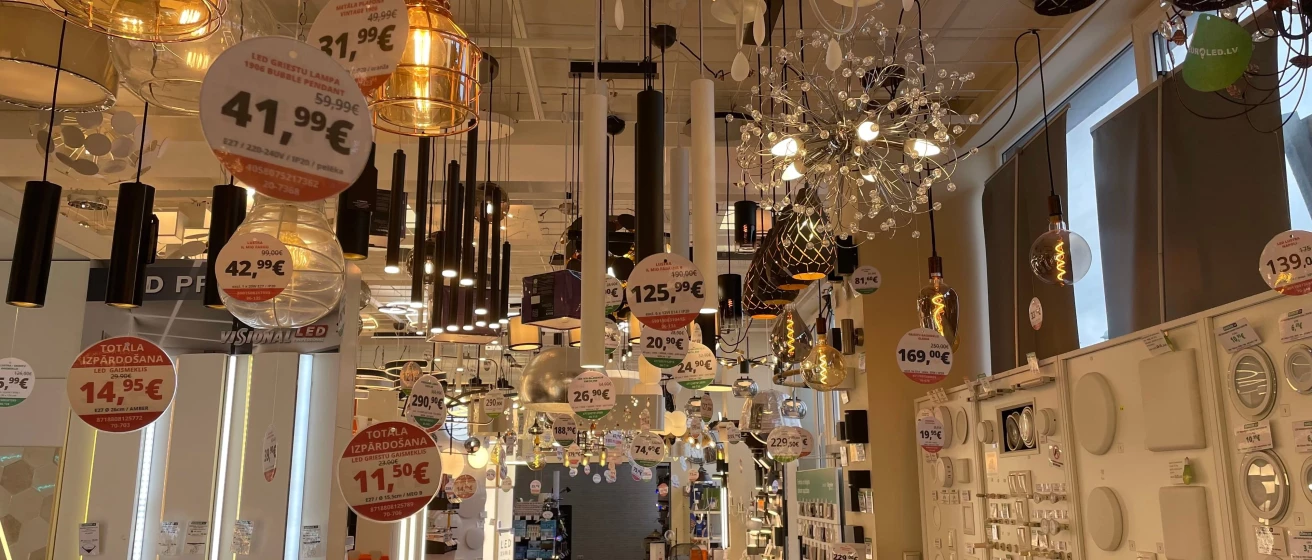
Today, as the world strives to reduce energy consumption and increase sustainability, LED lamps are becoming an increasingly popular choice for home lighting. With their excellent energy efficiency and long service life, LED lamps offer an efficient solution for those who want to reduce their ecological footprint while saving on electricity costs.
What are LEDs?
LED stands for "Light Emitting Diode". It is a semiconductor light source that emits light when an electric current flows through it. LED technology differs from traditional lighting methods such as incandescent and fluorescent bulbs in the way they produce light, and they offer many advantages over these older technologies.
LED Operating Principles
The operation of LEDs is based on electroluminescence, which is the name of the process in which a material emits light when an electric current flows through it. Inside the LED is a semiconductor chip, which starts emitting light when it receives current. This semiconductor chip is housed in a small capsule that protects it and focuses the emitted light.
LED Advantages
Energy efficiency: LED lamps use much less electricity than traditional bulbs to provide the same amount of light.
Long life: LED lamps can last up to 25,000-50,000 hours or more, which is much longer than incandescent or fluorescent lamps.
Durability: LED lamps are more resistant to shock and vibration because they do not contain glass and are less fragile.
Low heat production: LED lights convert most of their energy into light, not heat, which means they don't get as hot as other types of light sources.
Environmental friendliness: LED lamps do not contain harmful materials such as mercury found in some other light bulbs and are completely recyclable.
LED Applications
Thanks to these advantages, LED technology is widely used in various fields, from everyday home lighting to complex industrial and commercial applications, as well as in vehicle lighting, street lighting and even plant cultivation with special grow LEDs. Its flexibility and efficiency make LED technology an excellent choice for both new designs and the modernization of existing lighting systems.
Energy efficiency
LED lamps are known for their high energy efficiency. Compared to traditional bulbs such as incandescent or halogen bulbs, LED bulbs use significantly less electricity to provide the same or even higher levels of illumination. This means that choosing LED lamps for home lighting can significantly reduce energy consumption, which is a significant step towards energy efficiency.
Durability
In addition to energy efficiency, LED lamps are also distinguished by their sustainability. They can last up to 25,000 hours or more, which is significantly longer than other types of bulbs. Due to this long life, LED lamps need to be replaced less often, which reduces waste and promotes the sustainable use of resources. In addition, many LED lamps are made of less harmful materials compared to other types of lighting, making them more environmentally friendly.
LED lamps offer wide possibilities in the design and functionality of home lighting. They are available in a variety of color temperatures, from warm white to daylight, allowing you to create the desired atmosphere in any room. In addition, with dimmable models, you can easily adjust the brightness of the lighting, creating suitable lighting for different activities and times of the day. The efficiency and longevity of LED lamps make them an ideal choice for home lighting, providing both aesthetic and practical value.
Combining energy efficiency and sustainability with a wide range of applications in home lighting, LED lamps are an excellent choice for anyone looking for an efficient and sustainable lighting solution. They not only help reduce electricity consumption and increase lighting efficiency, but also contribute to a more environmentally friendly and sustainable lifestyle. By choosing LED lamps, we can significantly reduce our ecological footprint while improving the quality of lighting in our home.